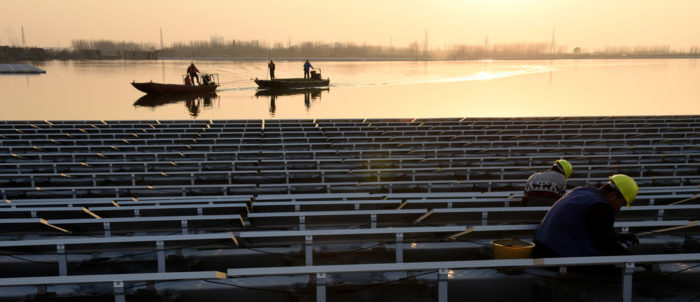Solar power companies in Southeast Asian that are competing for land with agriculture, industry and expanding populations have found an innovative alternative: placing floating panels in lakes, dams, reservoirs and the sea, according to World Economic Forum.
Earlier this week, the state utility Electricity Generating Authority of Thailand (EGAT) said it will submit a proposal for a 45-megawatt floating solar plant in the Sirindhorn dam in the country’s northeast.
EGAT plans to invest in about 16 such projects across nine dams in the country, deputy governor Thepparat Theppitak told reporters.
Elsewhere in the region, Singapore is developing one of the world’s largest offshore floating solar systems in the Strait of Johor to the north of the island.
“In land-scarce countries like Singapore, the widespread use of PV systems is hindered by space constraints and limited roof space,” said Frank Phuan, chief executive officer of Sunseap Group, which is building the system.
The platform has to be “more robust” than systems in reservoirs or lakes to withstand tougher conditions on the open sea, and to overcome barnacles that may grow on it, he said.
It was also difficult to find a spot in the sea that was not frequented by shipping vessels, he said.
Despite these challenges, floating solar systems are growing quickly in Asia alongside those on the ground and on roofs, according to the Solar Energy Research Institute of Singapore (SERIS).
While floating panels are more expensive to install, they are up to 16 percent more efficient because the water’s cooling effect helps reduce thermal losses and extend their life, according to SERIS.
The panels also reduce evaporation from water bodies when temperatures are warm, thus saving freshwater for drinking.
“The greater efficiency offsets the higher cost of installation,” said Celine Paton, a senior financial analyst at SERIS.
“Technological advances should soon bring them on par with ground systems” in terms of cost, she told the Thomson Reuters Foundation.
Southeast Asia is particularly well suited for floating panels because of the scarcity of land and because they can be easily installed in the region’s many hydropower dams, where they can use existing transmission systems, she said.










